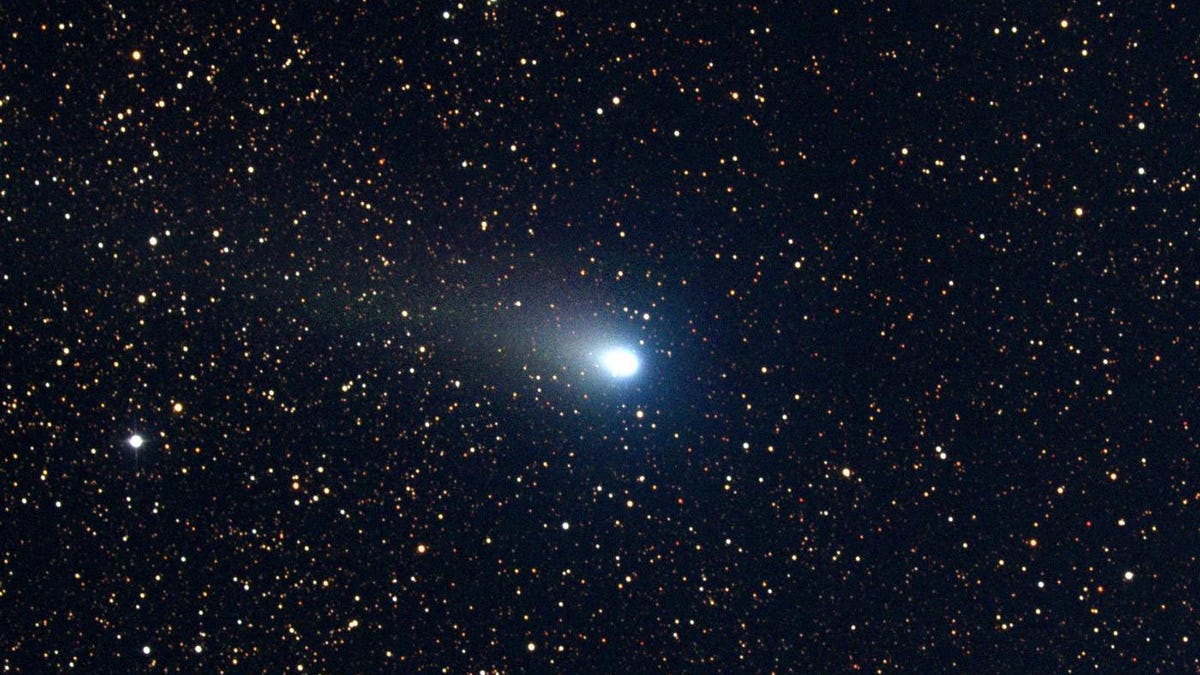How to see the Draconid meteor shower tonight before it's too late
A famously unpredictable celestial event could surprise with some early evening shooting stars.

"Comet 21P" is the source of the Draconids.
The Draconid meteor shower peaked Wednesday evening, but Thursday night still offers a chance to see shooting stars or even a fireball in the sky without having to put much effort or planning in.
Most similar showers require staying up late or getting up well before dawn to catch the best part of the show, but the Draconids are the rare bunch that tend to be out in force just after dinner.
The Draconids are what the American Meteor Society considers a variable meteor shower, meaning they're typically not that exciting, producing only a few shooting stars per hour at best. But they can produce strong activity on rare occasions.
The Draconids occur when the Earth passes through trails of debris left behind by past visits from the comet 21P/Giacobini-Zinner. AMS reports that our planet is predicted to pass through two trails of dust and other detritus the space snowball left behind during its trips to the inner solar system all the way back in 1704 and 1711.
It's possible this will lead to an increase in activity and it especially favors the East Coast of the US, where the peak in activity will come as night falls and the constellation of Draco the dragon is high in the sky. The trails of the Draconids will appear to originate from around the head of the dragon, hence the shower's name.
The shower should be visible for sky watchers in other parts of the world, too. Astronomer Tony Phillips estimates that meteor fans should be able to see as many as 10 per hour in the northern hemisphere. Folks south of the equator won't be totally cut out of the fun, but expect to see fewer shooting stars.
To get a glimpse of the Draconids yourself, plan to head outside as soon as night falls. Get as far away from all light pollution as you can to a location with a wide, open view of the sky. Lay on your back, let your eyes adjust and just watch. If you can find Draco in the sky, great, but you should be able to see meteors without focusing on a particular part of the sky.
Should you happen to capture a photo of anything spectacular in the sky, don't forget to share it with me on Twitter @EricCMack.

